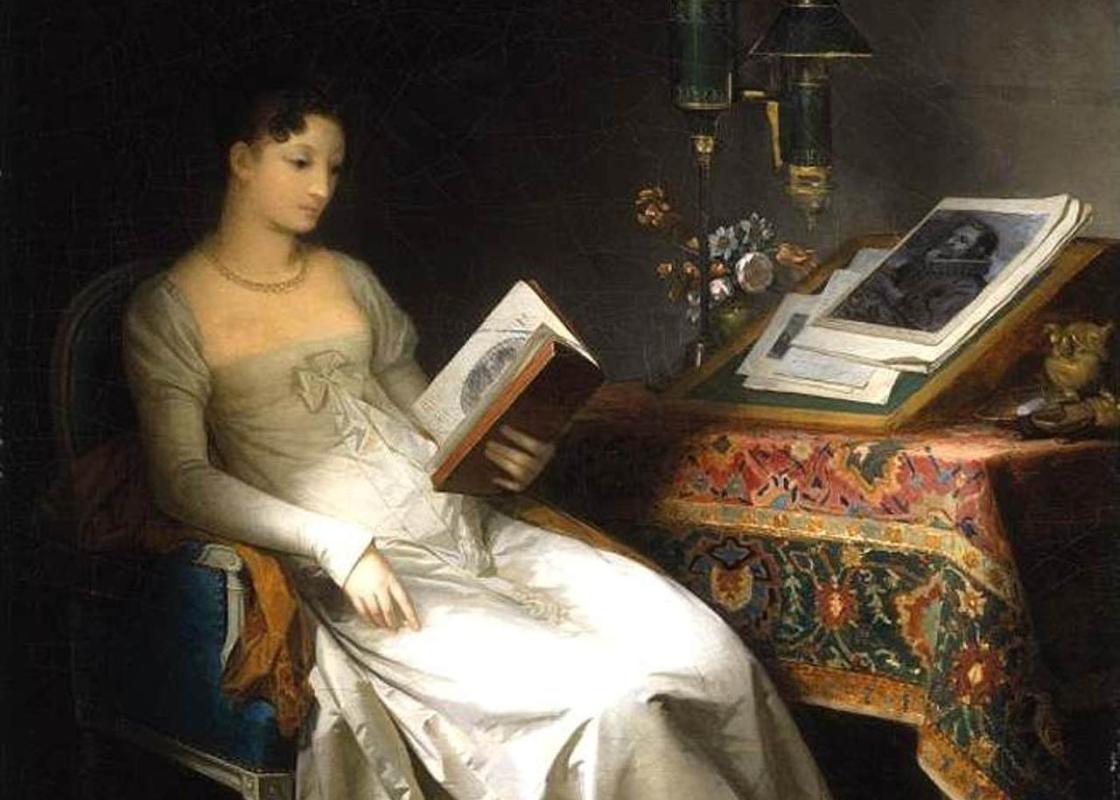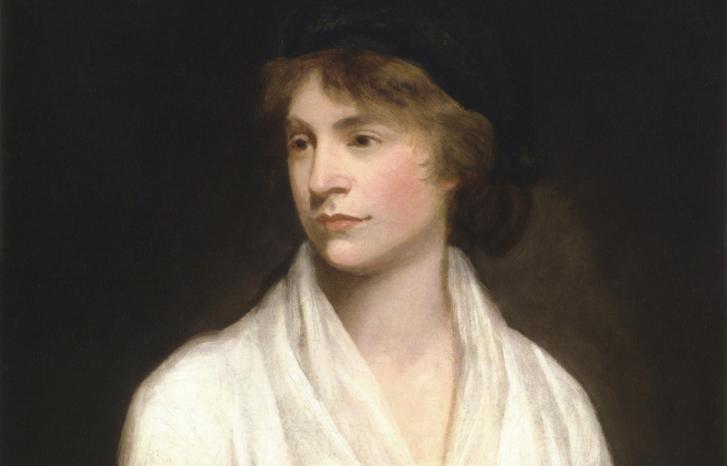«So long as our British ladies continue to encourage our hackney scribblers, by reading every romance that appears, we need not wonder that the press should swarm with such poor insignificant productions.»
Thus wrote a literary reviewer in 1760, when he reviewed a copy of a book belonging to the popular genre “sentimental courtship novel”. This was a subgenre of the more recognised “sentimental novel”, both popular in Britain in the eighteenth century. In the courtship novels the protagonists are almost always women and the plot revolves around courtship and marriage.
“It is a light genre which may be compared to modern Pulp Fiction. The novels were probably hastily written and were relatively ephemeral productions which circulated for a short period before they fell into oblivion,” says Siv Gøril Brandtzæg. She has recently defended her PhD thesis, in which she examines relatively unknown sentimental courtship novels and their reception by the literary critics.
When the trivial became political
In their own time the novels were described as trivial. But according to Brandtzæg, these books were not without relevance to the debate of the day, although the entertainment aspect was dominant.
“Whether it was conscious or not the writers addressed societal and gender political questions of contemporary significance. According to social historians, the British middle and upper-class underwent significant changes in this period. Arranged marriages were gradually phased out to the benefit of relationships based on love,” says Brandtzæg and continues:
“The parents’ power over their daughters gradually decreased, but these changes happened over a long period. Many people were probably still of the opinion that it was the father’s right to decide his daughter’s fate out of economic considerations. All the novels I have examined revolve around the woman’s struggle for a happy marriage.”
These novels describe both women and men who are confronted by their parents’ wish that their sons and daughters marry wealth rather than someone they love.
“To modern readers it might be surprising that the characters normally yield to their parents’ wishes. Sentimental, tearful scenes where the father kneels in front of his daughter and begs her to obey are common. And they most often result in the daughter’s promise to do as he wishes. Thus the novels are conservative in terms of what governs one’s choice of husband. Nevertheless, addressing this conflict at all was highly controversial in this period.”
“There is a significant underlying gender policy in these novels which is indicative of the contemporary changes in society. But there are no indications that the male reviewers were attentive to this aspect,” says Brandtzæg.
“By a Lady”
Most of the writers examined by Brandtzæg published anonymously, often with a title page claiming the novel to be written “By a Lady” or “by a young lady”. “In its presentation, the gendered tag “By a Lady” was in fact a part of the book promotion, since the majority of readers were, allegedly, women. The fact that the reviews, however, were so harsh may be the reason why many authors decided to remain anonymous. The female writers were typically ordered by their reviewers “to drop the pen and pick up the needle”, says the researcher.

At this time it was still common for female writers of more recognised literature to publish under their own name, but this became increasingly difficult throughout the nineteenth century.
“Perhaps this development was triggered by the reviewers, who treated female and male writers differently. The critics often started their review in a condescending, chivalrous tone – pretending to be extra kind since the writer was a woman – and afterwards slaughtered her writing.”
In some cases the reviewer suspects – possibly correctly – that the author is really a man. Then the critique is merciless. The author is accused of “sheltering under petticoats”.
Women: high imagination, poor language
The critics of the eighteenth century were of the opinion that the sentimental courtship novels were trivial and badly written. The majority of these novels were written by women.
“Many of the critics think that women have a high imagination, but that they cannot write. Women had far less opportunities for receiving an education than what was the case with men in this period. Thus they were often less skilled in terms of literary devices and rules of grammar than their male colleagues. Moreover, it is important to remember that many of these novels were hastily written, and this is reflected in the quality – or rather lack thereof – in the genre,” says the researcher.
The novels were also considered repetitive by the critics. They were seen as dull because they all revolved around the same ideas. Furthermore, the writers were accused of not experimenting with literary forms, having nothing to add to the progress of literature.
Harmful reading
Although the courtship novels were looked down upon, they were reviewed in the most prestigious periodicals of their time. Institutionalized literary criticism emerged during this period, and in accordance with the spirit of the Enlightenment, the critics decided to review all new publications. This was the period in which the entire world was to be measured and mapped.
“The reviews were devaluations of these novels. They were regarded as poor literature, and also considered harmful reading.”
“The genre was associated with women. The author was, for the most part, a woman, the protagonist was a young female, and presumably the majority of the reading audience were women. The critics, on the other hand, were mostly male, and they commented upon the depravity and insipidity of the audience.”
Wollstonecraft
There are a few important exceptions to the general ‘rule’ that the critics were men: for instance, Mary Wollstonecraft herself was highly critical towards the sentimental courtship novel as a genre.
“She is just as critical as her male counterparts, if not worse. She speaks with what I would call a male voice. Perhaps she had to undertake this position in order to be able to speak at all, given that she was a woman and thus marginalised in the public sphere. Nevertheless, some of the critique directed at this genre was pertinent,” says Brandtzæg.
Among Wollstonecraft’s objections was that the women who read these novels neglected more rational literature.
“It is reminiscent of the critique directed at modern days’ Pulp Fiction and new media,” says Brandtzæg.
See also: Camilla Collett: Older, brighter and funnier
Strange creatures
“Even today literary scholars are preoccupied with the reader rather than with the text itself when they examine the so-called “trivial literature”. Several well-known literary sociological and feminist studies focus on the readers rather than the literature in which these readers engage. These studies often have a rather hostile attitude towards the reader of entertainment literature, says Brandtzæg and adds that
“both today and in the past literary theorists attach attitudes to the readers without knowing if these attitudes are prevalent. It is similar to a zoological study of strange creatures.”
The researcher claims that there is a gap between those who read this kind of literature and those who write about it.
“Literary critics generally do not read so-called commercial entertainment literature themselves, and are therefore distanced and alienated from both the readers and the literature.”
Aggressive reviewers
“The novel was declared dead by many literary critics of the eighteenth century, although this was only decades after it first appeared.”
Brandtzæg thinks the critics feared that “low” literature was about to destroy the novel genre as such and thus became increasingly harsh and aggressive in their critique.
In regard to this the researcher finds it interesting to look at the parallels between the eighteenth century and today. This fear is as present today as it was then within the field of literary criticism.
“This, I believe, has to do with the literary theorist’s fear of one’s lack of impact on the reading audience. But the reader of commercial fiction in the eighteenth century did not care about the reviewer’s or the theorist’s opinion and this is pretty much echoed in the world of literature today. Something which is, perhaps, a good thing” concludes Brandtzæg.
Translated by Cathinka Hambro.
Siv Gøril Brandtzæg is Assistant Professor at the Department of Scandinavian Studies and Comparative Literature at Norwegian University of Science and Technology in Trondheim (NTNU). In November 2012 she defended her PhD thesis The Sentimental Courtship Novel and its Critics, 1769-1796.



